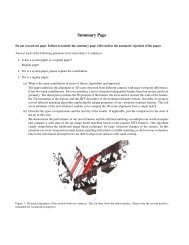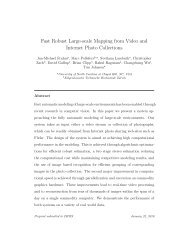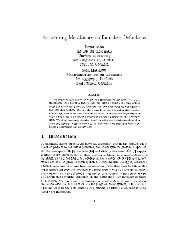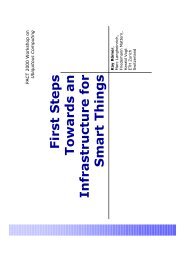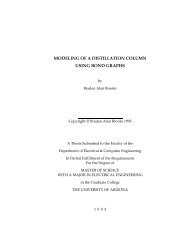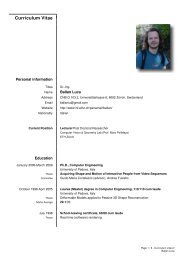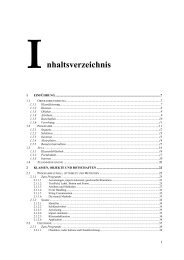A CIL Tutorial - Department of Computer Science - ETH Zürich
A CIL Tutorial - Department of Computer Science - ETH Zürich
A CIL Tutorial - Department of Computer Science - ETH Zürich
You also want an ePaper? Increase the reach of your titles
YUMPU automatically turns print PDFs into web optimized ePapers that Google loves.
CHAPTER 1. THE AST 13<br />
1.2 Printing the AST<br />
The function tut1FixInstr also uses <strong>CIL</strong>'s logging and pretty-printing features. The call to E.log<br />
causes messages to be printed to stdout. It is similar to Printf.printf from the OCaml standard<br />
library with a few dierences that are documented in cil/ocamlutil/errormsg.mli. Most<br />
importantly, you can print elements <strong>of</strong> the <strong>CIL</strong> AST by using the %a format specier. Then, corresponding<br />
to that format you must supply two arguments: a function (unit → α → doc), and such<br />
an α that you want to print. Functions like this for the AST elements are dened in cil.ml (e.g.<br />
Cil.d exp for Cil.exp's). Functions for building objects <strong>of</strong> type doc are available in the Pretty<br />
module documented in cil/ocamlutil/pretty.mli.<br />
1.3 test/tut1.c<br />
The module tut1.ml deletes writes inside functions named target to global variables named<br />
deleted. Thus, the function target below will return 37.<br />
# include <br />
int deleted = 37;<br />
../test/tut1.c<br />
int target()<br />
{<br />
int l;<br />
deleted = 0;<br />
l = deleted;<br />
return l;<br />
}<br />
int main()<br />
{<br />
int r;<br />
r = target();<br />
printf("r = %d\n", r);<br />
return 0;<br />
}<br />
We can build this le with the following command:<br />
$ ciltutcc --enable-tut1 -o tut1 test/tut1.c<br />
test/tut1.c:14: Deleted assignment: #line 14 "test/tut1.c"<br />
deleted = 0;<br />
Using the log message emitted by tut1FixInstr, ciltutcc informs us that it has removed an<br />
assignment to deleted. Now, we can run the resulting program:



